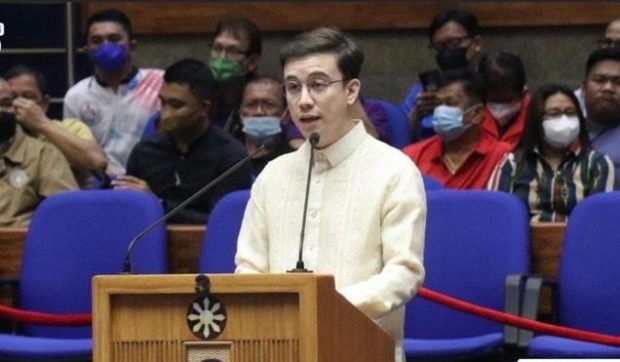
Quezon City 1st District Rep. Arjo Atayde. Photo from Rep. Atayde’s office
MANILA, Philippines — Months away from the onset of the rainy season, the Metropolitan Manila Development Authority (MMDA) is already being urged to fast-track flood control measures in the country’s capital region.
For Quezon City 1st District Rep. Arjo Atayde, ensuring flood control programs are in place as early as now is a proactive move to avoid a deluge of catastrophic proportions – like when Tropical Storm Ondoy (international name: Ketsana) submerged many parts of Metro Manila in 2009.
“Let’s not wait for another Ondoy flooding tragedy to happen again in Metro Manila,” the congressman said in a statement, noting that a number of areas in the metro are “very vulnerable to flooding” and that there were even cases when it only takes a few hours of intense rains to make a road impassable to vehicles.
READ: Survivor’s tale: Haunted by ‘Ondoy’
Atayde, however, also praised the MMDA for quickly responding to his privilege speech last November when he made the same observations and for promising to add more pumping stations in an area along Quezon City’s Araneta Avenue inundated during Ondoy.
Still, he stressed, the MMDA should identify more areas that would need flood control to ensure that flooding in Metro Manila would be minimized or avoided.
The MMDA “should continue working on identifying more flooded areas so that they can put in place flood mitigation measures before the wet season starts and typhoons bring about extraordinary rainfall,” Atayde said.
Atayde likewise suggested that a “flooding czar” be appointed and be given the power to monitor and assign flood control projects in Metro Manila, also known as the National Capital Region.
Among the projects that the government can implement, particularly the Department of Public Works and Highways (DPWH), is the creation of retarding ponds that would catch floodwaters, he noted. At least P40 million should be allocated to study the feasibility of retarding ponds in malls, multi-purpose courts, parks, and other open spaces, he further said.
Atayde also said that creating box culverts underneath Metro Manila roads, relocating informal settlers, and constructing high-rise walls and pumping stations at the San Juan River could be considered as another form of a flood control program.
RELATED STORY
Typhoon Ulysses: Like ‘Ondoy’ all over again